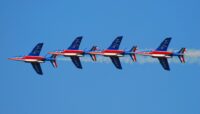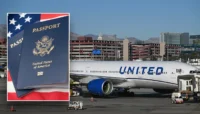Aviation involves a variety of critical speeds that determine an aircraft’s performance, safety, and operational efficiency. Among them, V speeds—which represent specific velocity limits—are essential for pilots to understand and apply correctly. This study will explore different V speeds, their significance, and other important speeds in aviation.
Understanding V Speeds
V speeds are standard velocity references assigned to specific flight conditions. These speeds are defined by aircraft manufacturers and regulatory authorities such as the FAA (Federal Aviation Administration) and EASA (European Union Aviation Safety Agency) to ensure safe operation. Below are the most commonly used V speeds:
- V1 (Decision Speed)
- The speed at which the pilot must decide whether to continue the takeoff or abort.
- Beyond this speed, the aircraft must take off as stopping may not be feasible.
- VR (Rotation Speed)
- The speed at which the pilot initiates nose-up movement to lift off from the runway.
- Ensures a smooth transition from ground to airborne phase.
- V2 (Takeoff Safety Speed)
- The minimum speed required after takeoff to maintain climb performance in case of an engine failure.
- Ensures the aircraft clears obstacles safely.
- VLO (Landing Gear Operating Speed)
- The maximum speed at which the landing gear can be safely extended or retracted.
- VLE (Landing Gear Extended Speed)
- The maximum speed at which the aircraft can be flown with landing gear extended.
- VFE (Flaps Extended Speed)
- The maximum speed permissible with flaps deployed to prevent structural damage.
- VNO (Normal Operating Speed)
- The maximum speed for normal flight conditions without encountering structural risks.
- VNE (Never Exceed Speed)
- The absolute speed limit beyond which structural failure or loss of control is imminent.
- VA (Maneuvering Speed)
- The speed at which the aircraft can safely maneuver without exceeding structural limits.
Other Essential Speeds in Aviation
Apart from V speeds, other velocity parameters contribute to flight efficiency and safety:
- Best Rate of Climb (Vy)
- The speed at which the aircraft gains altitude most efficiently over time.
- Best Angle of Climb (Vx)
- The speed that allows the aircraft to gain maximum altitude over the shortest horizontal distance.
- Stall Speed (VS and VS0)
- VS: The minimum speed at which an aircraft maintains level flight without stalling.
- VS0: The stall speed in landing configuration (flaps extended, landing gear down).
- Minimum Control Speed (VMC)
- The lowest speed at which the aircraft can be controlled with one engine inoperative.
- Maximum Endurance Speed
- The speed at which the aircraft burns the least fuel per unit of time, useful for holding patterns and loitering.
- Maximum Range Speed
- The speed that allows an aircraft to travel the longest distance per unit of fuel burned.
Importance of V Speeds
Understanding and adhering to V speeds is crucial for safe flight operations. Incorrect application can lead to runway overruns, loss of control, excessive stress on airframe components, or failure to achieve a safe climb. Airlines, manufacturers, and regulatory agencies establish these speeds through rigorous testing, ensuring pilots have clear operational guidelines for every phase of flight.








